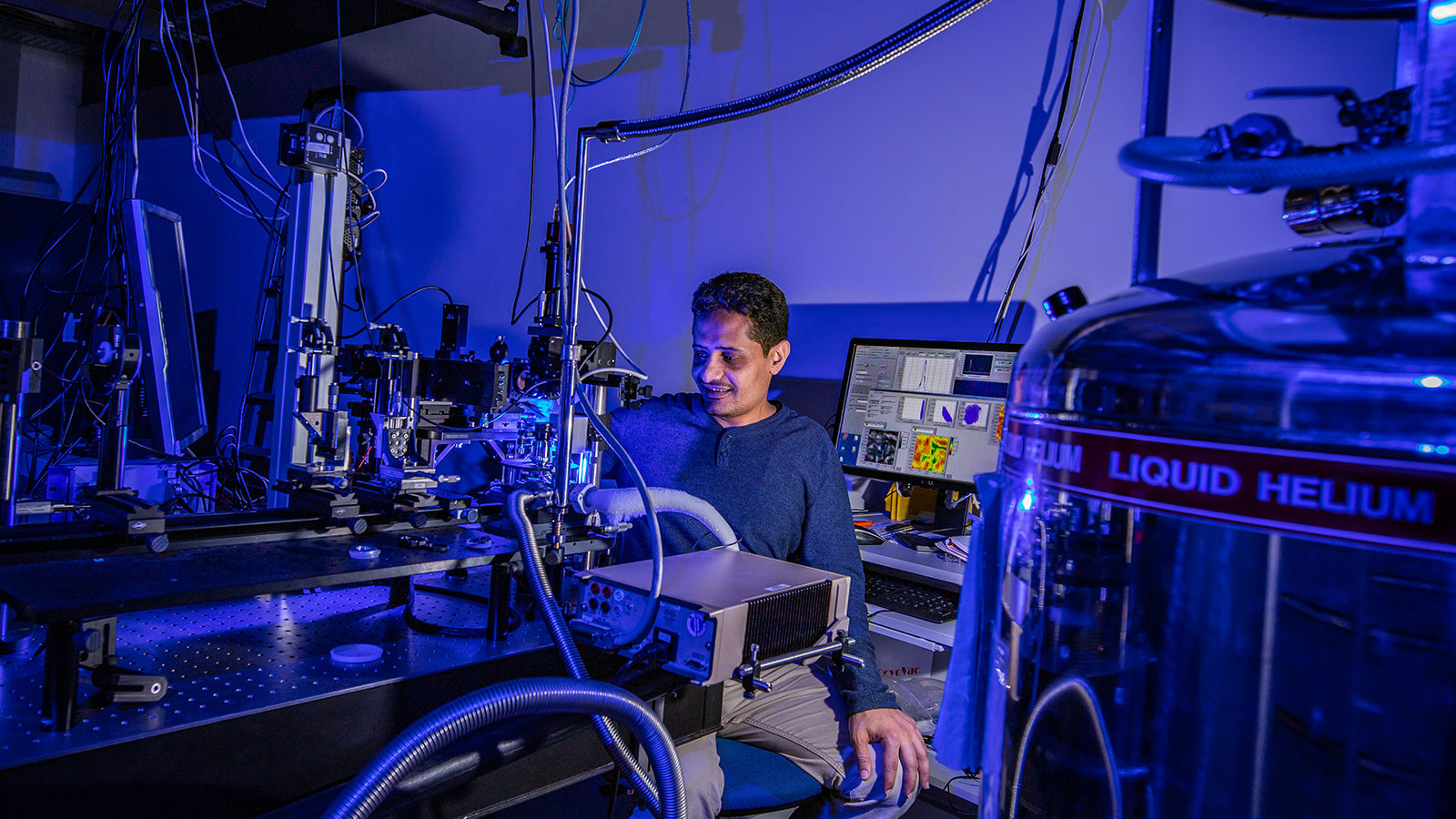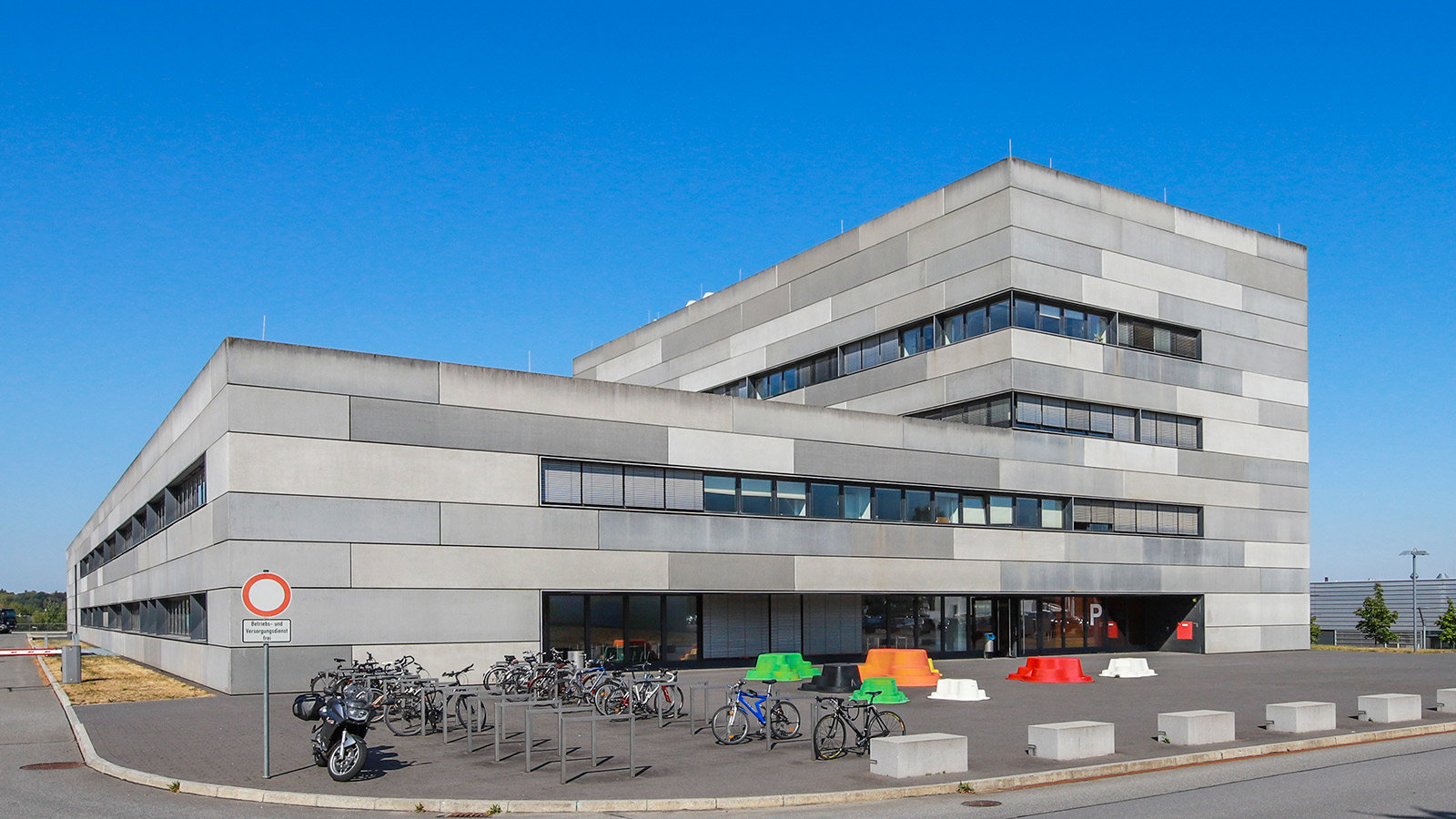Illumination at the Coldest Spot in Chemnitz
Researchers at the Institute of Physics at Chemnitz University of Technology are experimenting with, among other things, high-performance light-emitting diodes at -269 degrees Celsius
-

Dr. Mursal Baggash, Research Associate at the Professorship of Experimental Sensor Science, is preparing a measurement of a light-emitting diode at a special cooling unit in the laboratory that will investigate charge carrier transport at -258 degrees Celsius and light generation in the semiconductor layers. Photo: Chemnitz University / Jacob Müller -

The coldest spot in Chemnitz: in the building that houses the Institute of Physics, one can find the cryogenic technology which scientists use to carry out experiments at extremely low temperatures. Photo: Chemnitz University / Jacob Müller
Even during the harshest winters in the Erzgebirge (Ore Mountains), the lowest temperatures seldom fall below -25 Celsius. Medically-used cold chambers in the region offer therapies at -90 degrees Celsius. However, there is a place in Chemnitz where it is even colder: in several laboratories at the Institute of Physics at Chemnitz University of Technology, -269 degrees Celsius can be routinely achieved via cooling with liquid helium. First, around 900 cubic meters of this rare gas are liquefied in a closed cycle in the basement of the Institute, resulting in around one cubic meter of very cold liquid available for experimental purposes. This is then transported to the experimental facilities with well-insulated thermos vessels and is used for the cooling processes. The evaporating helium is returned to the tanks in the basement via copper pipes laid throughout the building.
The scientists at the institute especially need this coveted liquid for experiments that take place at extremely low temperatures. In this setting, many things that disturb and influence experiments can be excluded, so as to selectively investigate physical phenomena. “Experiments at low temperatures are necessary for the study of fundamental phenomena,” says Prof. Dr. Ulrich Schwarz. His professorship for Experimental Sensor Science at Chemnitz University of Technology is one of the most avid users of liquid helium. Currently, the research team is investigating the conversion of electricity into light that occurs in high-performance light-emitting diodes (LEDs), and by using photoluminescence they delve deep into the microcosm. “The goal is to further increase the efficiency of LEDs. We therefore have to understand which processes occur during the transport of charge carriers between the semiconductor layers in order to ultimately be able to selectively influence them,” said Schwarz. This is not only an exciting topic within foundational research, but industry is also very interested in the results. “For example, we have been researching in this field for some time now, together with Osram Opto Semiconductors GmbH,” adds the physics professor.
This is only possible with the refrigeration technology available at the physics institute. The experiments with the LEDs take place at a temperature of about 15 Kelvin (i.e. at about -258 Celsius) in a so-called cryostat. This is a cooling unit in which very low temperatures can be kept constant for a very long time. In order to investigate the light-generating mechanisms in the light-emitting diodes, they must be visible from the outside via a window in the “cryostat refrigerator”. It should also be noted that in this experiment, the distance between the lens of a high-resolution microscope and the LED that is being tested must be less than two millimeters. For this purpose, the LED is set just below a thin quartz glass window, with just a thin layer of high vacuum serving as thermal insulation between the light-emitting diode and the quartz glass window. “While our scientists are working at the microscope in the climate-controlled laboratory at room temperature, the light-emitting diode at -258 degrees Celsius seems to be so reachable,” says Schwarz.
The chiller is not only used for research purposes, it is also used for teaching. For example, Chemnitz physics students can also conduct experiments at low temperatures during their studies, by way of internships.
Homepage of the Institute of Physics: https://www.tu-chemnitz.de/physik/
For more information, please contact Prof. Dr. Ulrich Schwarz, Phone +49 371 53130001, E-mail ulrich.schwarz@physik.tu-chemnitz.de
(Translation: Jeffrey Karnitz)
Mario Steinebach
07.02.2019




